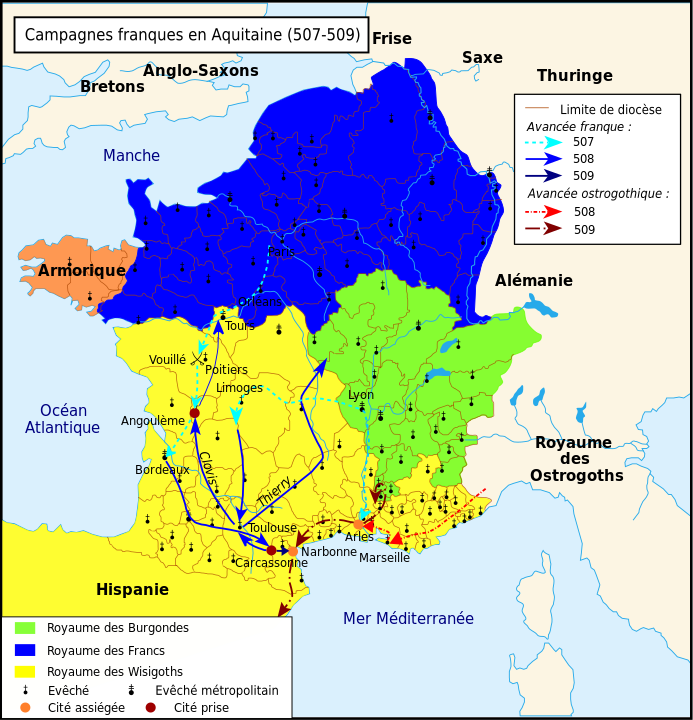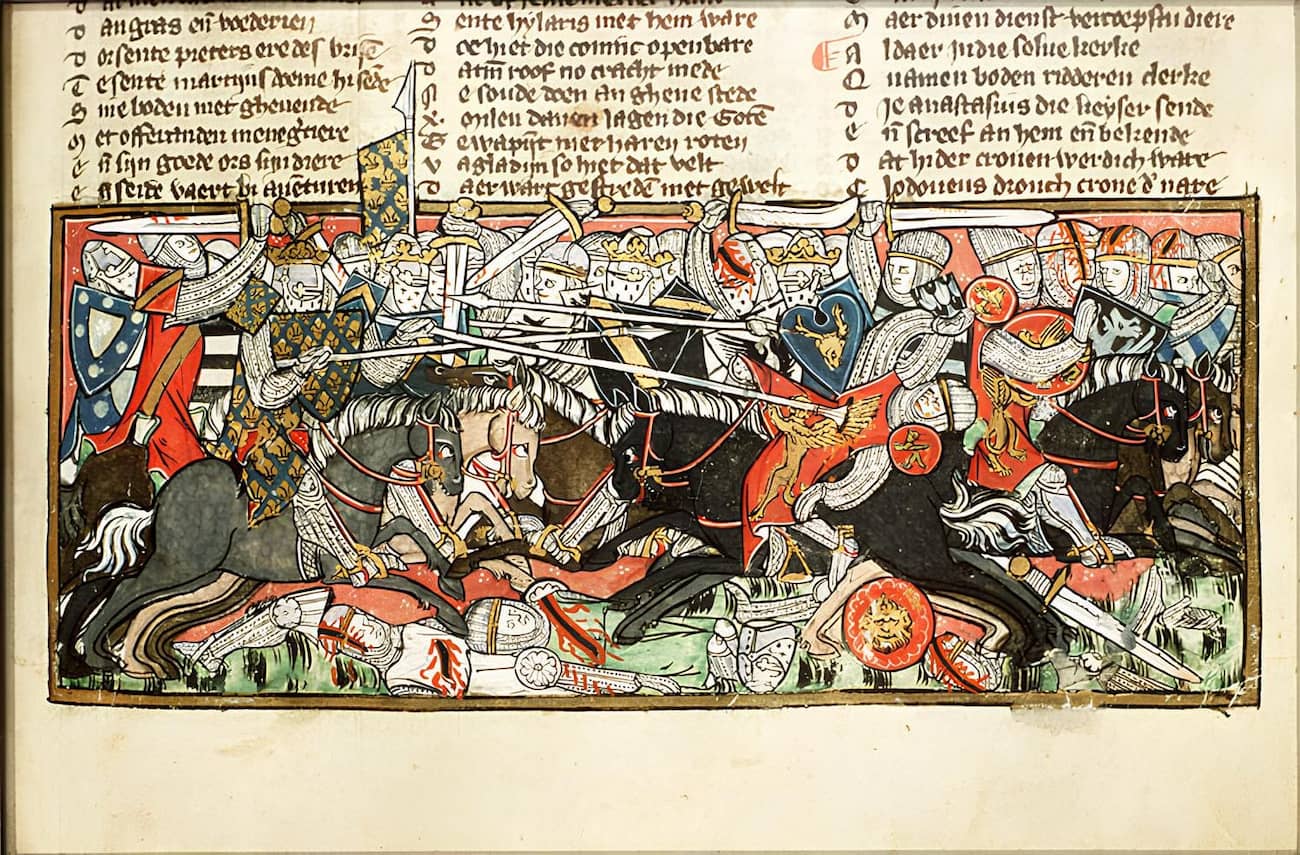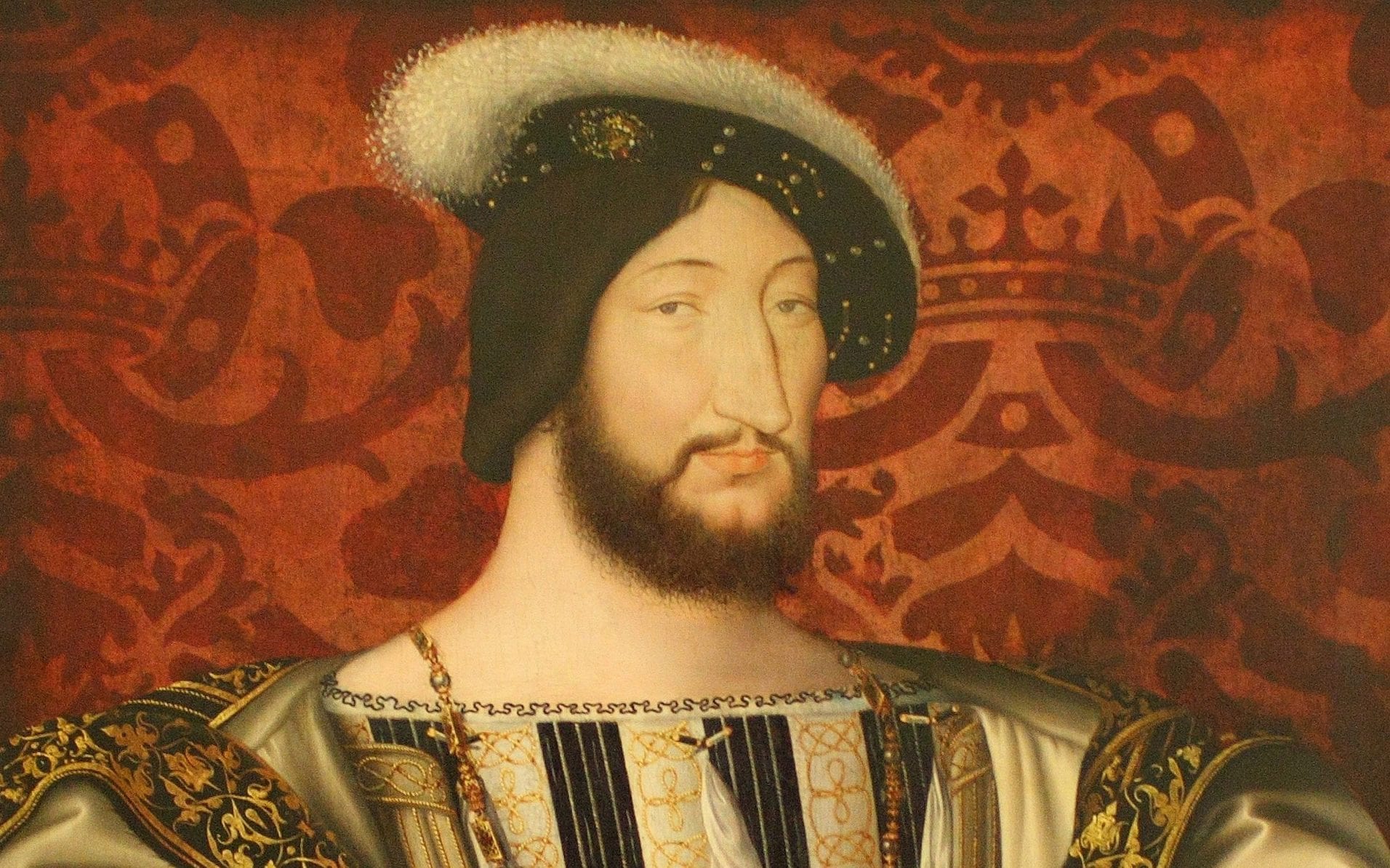In 507, the Visigoths and Auvergnats to the south fought the Franks under the leadership of Clovis to the north of Gaul in the Battle of Vouillé, which took place in the same-named town close to Poitiers. Clovis, the Frankish king, driven by his ambition for conquest, initiated this battle primarily for military, political, and religious reasons. Previously, the Franks had launched two expeditions in 496 and 498 against the Visigothic kingdom of Toulouse. In 507, aided by his eldest son, Thierry, Clovis headed to Poitiers for another confrontation.
Clovis emerged victorious in this battle, and the Visigoths lost their king, Alaric II, who was killed in combat by Clovis himself, known for his formidable warrior skills. Following this victory, Clovis seized control of the southwestern part of France, extending his rule over most of the Visigothic Kingdom between the Loire and the Pyrenees, which constitutes the southern region of present-day France.
Clovis’ conversion to Christianity, particularly to Nicene Christianity, had a unifying effect on his Frankish forces. It is believed that his Christian faith played a role in the battle, as he attributed his victory to the Christian God.
Why Did the Battle of Vouillé Take Place?

Clovis was renowned for his ambitions of conquest and expansion. He had previously attacked the Visigoths in 496 and 498. Clovis succeeded his father, Childéric, as the leader of the Salian Franks at the age of 15. The Franks were of Germanic origin and had settled within the Roman Empire, along the Rhine, and in present-day Belgian territory. Influenced by his devout wife Clotilde, Clovis converted to Catholicism, and this highly symbolic baptism took place on December 25, 496 or 498, depending on the sources.
This conversion marked a major event in French history, and it was from this event that future kings of France would be known as the “Eldest Son of the Church.” Clovis’s conversion strategically aligned him with the Catholics and the Eastern Roman Emperor to facilitate his conquest of Gaul, in which the Battle of Vouillé in 507 played a pivotal role.
Which People Were Involved in the Battle of Vouillé?
The Frankish king Clovis led the Burgundians and the Franks in the Battle of Vouillé, with the Burgundians controlling the northern region of France.
The Burgundians originally came from the Baltic Sea shores and settled between the Jura Mountains and the northern Alps after being displaced by the Huns. They were particularly numerous between the Loire and the Saône. The Burgundian kingdom reached its zenith under the rule of Gondebaud, who happened to be the uncle of Clotilde, Clovis’s wife.
In this battle, both of these peoples, under the leadership of Clovis, would attack the Visigoths, who had formed an alliance with the Auvergnats (from whom modern-day Auvergne derives its name). The Visigoths were led by King Alaric II, a Germanic people descended from the Goths, who had split into two branches: the Ostrogoths and the Visigoths.
At the time, the Visigoths controlled a vast territory, ranging from Vouillé to the entire southwestern part of France, including Hispania.
How Did the Battle of Vouillé Unfold?
In 507, the Franks, led by Clovis and his son Thierry, crossed the Loire in the direction of Poitiers. Their goal was to seize the Visigothic kingdom and conquer Gaul. On the other hand, the Visigoths, with their king Alaric II, moved north to impede the Franks’ advance. Alaric II didn’t have all his forces with him, as part of his troops were already engaged in the southern part of their territory, under attack by the Romans. He also counted on the support of the Ostrogoths, but this hope would go unfulfilled.
Despite his reservations, Alaric II engaged in combat that began at dawn in the plain of Vouillé. The Visigoths lacked the military strength, and in a final one-on-one duel, Clovis himself killed Alaric II. In disarray, the Visigoths fled to the south with Amalaric, the heir to their kingdom. The Auvergnats, allies of the Visigoths, did not surrender either; they fought until mid-morning and suffered heavy casualties. The Battle of Vouillé finally came to an end.
Who Won the Battle of Vouillé?
In the Battle of Vouillé, where Alaric II lost his life, the Franks under Clovis’ leadership prevailed.
Clovis, thanks to his conversion to Catholicism, garnered the support of a significant portion of the Roman Empire, which was led by the Catholic Emperor of Constantinople. In the battle of Vouillé, Clovis positioned himself as a defender of the Christian faith against Arianism, the religion of Alaric II, which was considered heretical.
During the period of the Battle of Vouillé, the Visigoths were already under attack by the Romans in the southern part of their kingdom. Alaric did not have all his armed forces at his disposal. The Ostrogothic King Theodoric, an ally of the Visigoths, was unable to come to Alaric’s aid because his own territory was also under attack.
The Battle of Vouillé marked a significant step in the Frankish expansion in Gaul. It contributed to the establishment of the Merovingian Dynasty, which played a pivotal role in the formation of the medieval Frankish state and later the Carolingian Empire.
What Were the Consequences of the Battle of Vouillé?
Following Clovis’s victory over the Visigoths and the death of their king, Alaric II, the path to the south opened for the Franks. Faced with this massive breakthrough, the Visigoths retreated to Hispania, except for the region of Narbonne. In 508, Clovis and his army captured Tolosa (Toulouse), the former capital of the Visigoths, and the Narbonnaise. The Ostrogoths, however, later decided to intervene and retook the Narbonnaise. The Franks gained control of numerous territories, including Aquitaine, Gascony, Languedoc, Limousin, and Auvergne. The Burgundians, allies of Clovis, obtained control over Provence, although they failed to conquer Arelate, the predecessor of the city of Arles.
The Battle of Vouillé resulted in a decisive victory for Clovis I and the Franks.
King Alaric II of the Visigoths was killed in the battle, and the Visigothic kingdom in Gaul effectively collapsed, marking the end of their rule in the region.
The Battle of Vouillé had significant consequences, as it marked the beginning of the shaping of the future boundaries of France, with the Pyrenees line established. Subsequently, Clovis’s successors gained influence over strategic territories, such as the County of Toulouse and the Duchy of Aquitaine. In 508, Clovis established the new capital of his kingdom in Lutèce (Paris) to facilitate governance over the newly acquired territories. In the same year, the Emperor of Constantinople, who led the Eastern Roman Empire, granted Clovis the highly symbolic title of Consul of the Romans.






